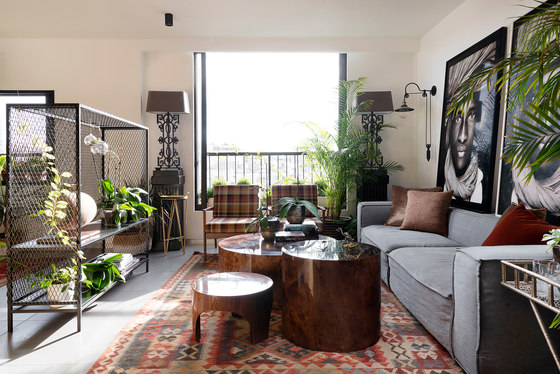
Fotograf: Gidon Levin
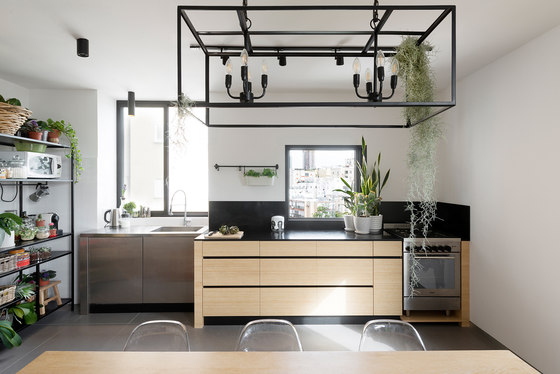
Fotograf: Gidon Levin
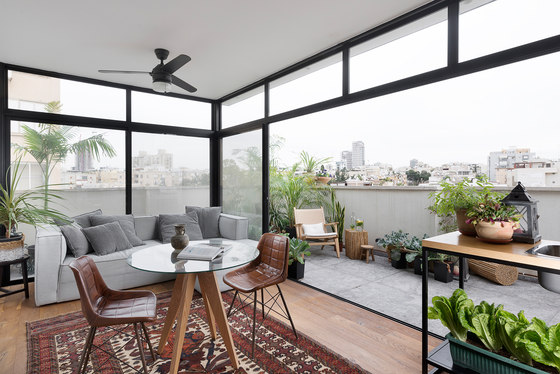
Fotograf: Gidon Levin
What happens at the junction of a design rich aesthetic from the 50s through the 70s and the “cleanliness” of current design? When minimalist utilitarian carpentry meets crafted objects and Oriental inspiration? What sparks when urbanity and nature loving coalesced? This intersection of worlds is found in the newly designed Nahalat Yitzhak apartment in Tel Aviv. The apartment is home to a renown fashion designer and his partner, a media figure. They requested functional and spacious spaces, as well as ample storage. Planning the apartment instigated many conversations regarding lifestyle, practical use, leisure, natural lighting, and work requirements.
Before the renovation, the apartment had two bedrooms, a living room and a separate kitchen; the rooftop floor had a 10 m2 attic. The design concept for downstairs led to the creation of one unrestricted and functional space – by perceiving the structure’s enveloping walls as an outer shell for a domestic hub. Custom-made carpentry and welding units structure the inner space, as each function has a unit that “contains” it. In addition, 40 m2 of lightweight construction (steel frame and aluminium roof) were added to the rooftop floor.
The construction process began by demolishing all the inner walls on the entrance level, dismantling the floor, washrooms and windows, and creating a totally clear space, with the exception of one constructive cement pillar. Plumbing, electric wiring and aluminium work were likewise replaced. Renovation costs totalled around $200K, most going to carpentry and welding. The 74 m2 first floor now consists of an open space for the living room, kitchen, dining table (with a closed guest bathroom), as well as the master bedroom unit with a walk-in closet and bathroom. The 64 m2 rooftop floor holds an additional lounge, kitchen and small dining table, as well as a guest bedroom and washroom. A paved balcony of 24 m2 is annexed to the parameter.
The black iron entrance door leads into a small entrance hall that exists in the gap between a large service closet and the outer wall. One of the unique elements of the apartment is a floor-to-ceiling closet, shaped in the letter "L". The closet is the heart of the house with regard to its location and volume, and one sees it immediately and continuously from every spot in the space.
This main piece of carpentry arranges all different uses around it: An entrance hall, guest bathroom, living room, dining area, kitchen, bedroom and closet room. It is bidirectional, and is used both as a facade for the living space and as an inner facade for the bedroom (and even the guest bathroom). Along its line the closet is used for food and kitchenware, office supplies, bookshelves, clothes and shoes, and even as a docking station for the robotic vacuum cleaner. It also serves as a passage to the air conditioning, electricity and lighting systems.
The closet is constructed with natural bamboo boards, separated from both floor and ceiling by a black aluminum profile. Using the wood with its natural tones as a critical mass in the apartment is affected by the late 50s esthetic, beloved by the tenants.
The living room is furnished with checkered Missoni armchairs and a grey couch. End tables of three different heights fill the space, all made of mapa-burl wood with an epoxy finish, and a hand-woven Uzbek rug warms the grey floor tiles. Black wood podiums were placed the big window, adorned with antique Oriental lamps. Pictures of Wild Africa, sculptures and a variety of plants complete the exotic look. The living room is bordered by a costume welding unit, iron and black net, used to exhibit plants and decorative pieces and prepared for an entertainment and sound systems.
The kitchen was planned as different units set side by side, each of which has its own defined purpose, while between them a dining table is placed. A black marble surface sits on a custom-made wooden unit with legs, which contains cupboards, drawers and an oven. A custom-ordered stainless steel component is used as a “wet unit”, in which a sink and a hidden dishwasher are contained. Beside it we find an open storage unit for “freestyle” storage. The fridge nests inside the main closet.
A concealed door in the same large closet leads into the master bedroom. The bedroom is surrounded by wing-door closets and drawers for maximal storage. The closet ends at the constructive cement pillar, from which plaster was peeled and roughly. Between the pillar and the outer wall is a transparent glass divider, allowing for light and an inside view of the kitchen. The front of the closet leads to the dressing room, and ends as a ceiling-high open storage unit for shoes. To the right of the dressing room, separated by transparent glass dividers, one can find the washroom. White cylinder sinks were placed on a woodworked bamboo board, sitting upon a unit made of iron frames with a black paint finish. A pair of mirrors, with black iron tri-square-shaped corners, hang above them.
Spiral stairs made of black-painted steel lead up to the rooftop floor. This floor was planned mainly for hosting and work – a living space and open kitchen, beside a bedroom and washroom. Floor-to-ceiling glass vitrines were installed around the living space. The moving vitrines were planned so that one could open them completely and utilize the kitchen for outdoor hosting and gardening. The balcony was paved with “brutalist” cement tiles, and is mainly used as a green terrace for growing vegetables, organic herbs and ornamental plants.
From the balcony, a crowded and densely populated urban view of Tel Aviv can be seen. This “White City” view contrasts the inner greenhouse effect. During the planning process, an emphasis was placed on natural lighting, the relationship between the “outer” public spaces and the “inner” private spaces, as well as interior. Every item in the apartment was carefully selected: Leather chairs on an iron frame from the 1970s, glass tables, vintage lamps found in Athens, hand-woven carpets, Missoni textile, Andrew Martin upholstery, an earthenware pot from Tibet, an original oil painting from a private collection and more. The washrooms and bathroom serve as blue and turquoise focal points that break the wood and black theme--exposed to the main space once the door is opened.
K.O.T. Project
Kfir Galatia Azulay
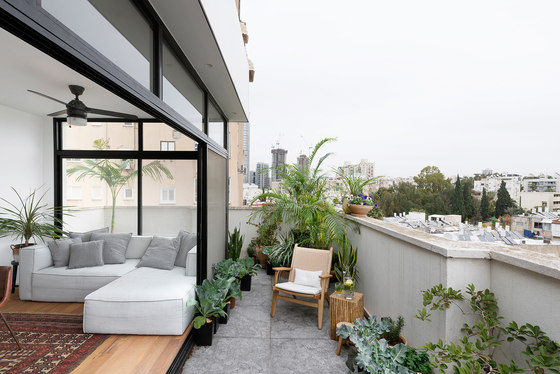
Fotograf: Gidon Levin

Fotograf: Gidon Levin
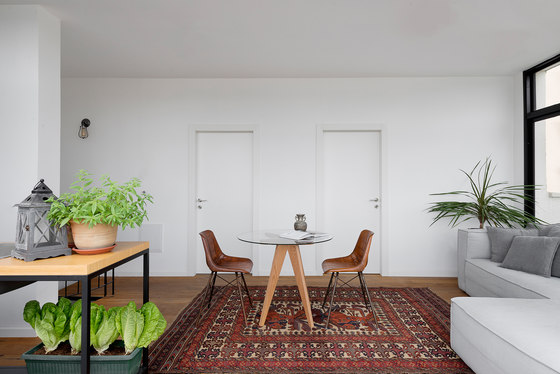
Fotograf: Gidon Levin
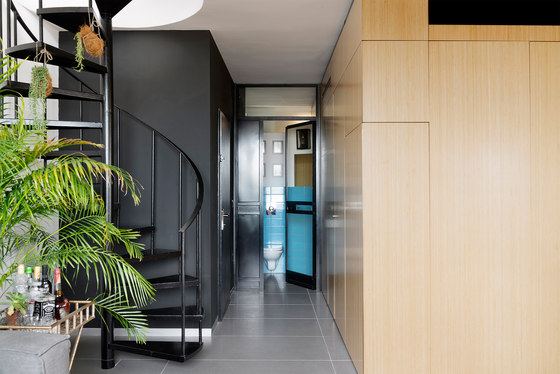
Fotograf: Gidon Levin
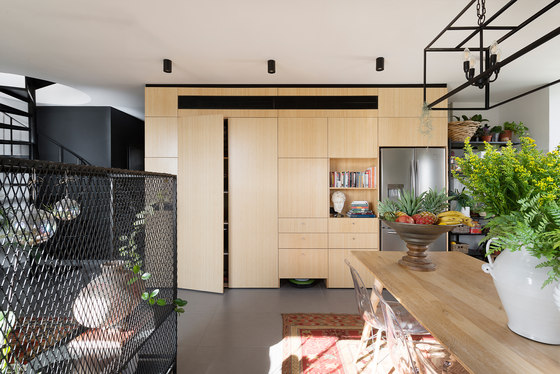
Fotograf: Gidon Levin
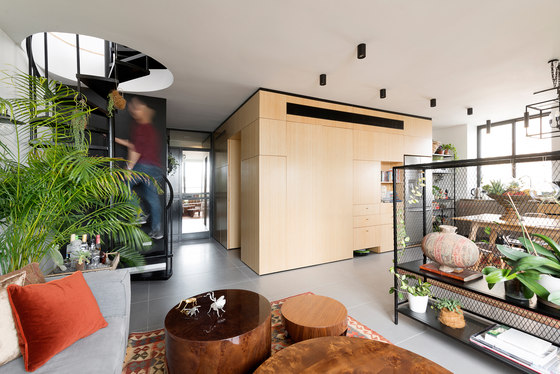
Fotograf: Gidon Levin
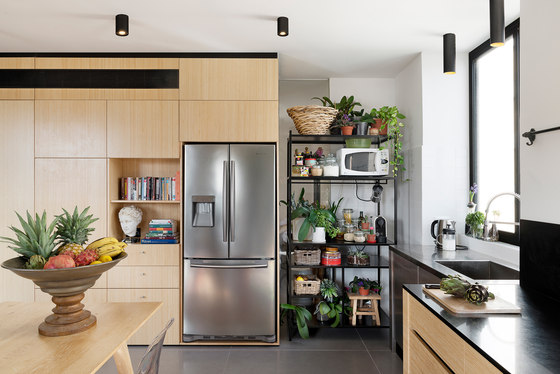
Fotograf: Gidon Levin

Fotograf: Gidon Levin
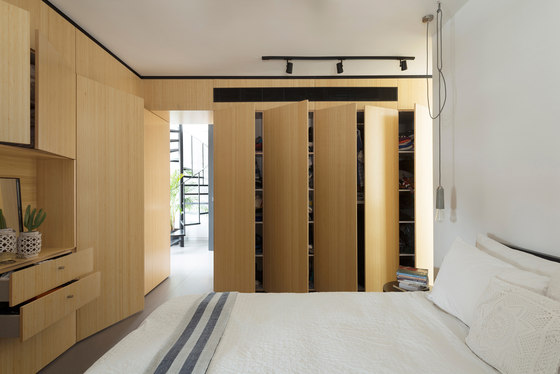
Fotograf: Gidon Levin

Fotograf: Gidon Levin
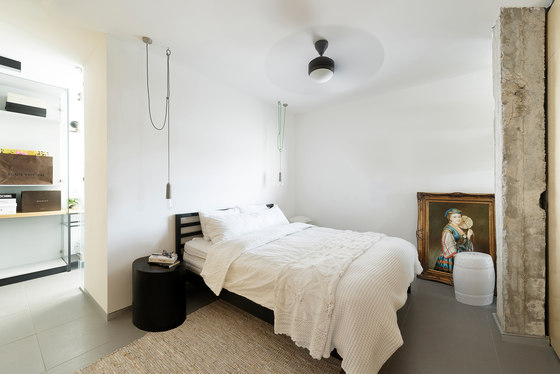
Fotograf: Gidon Levin
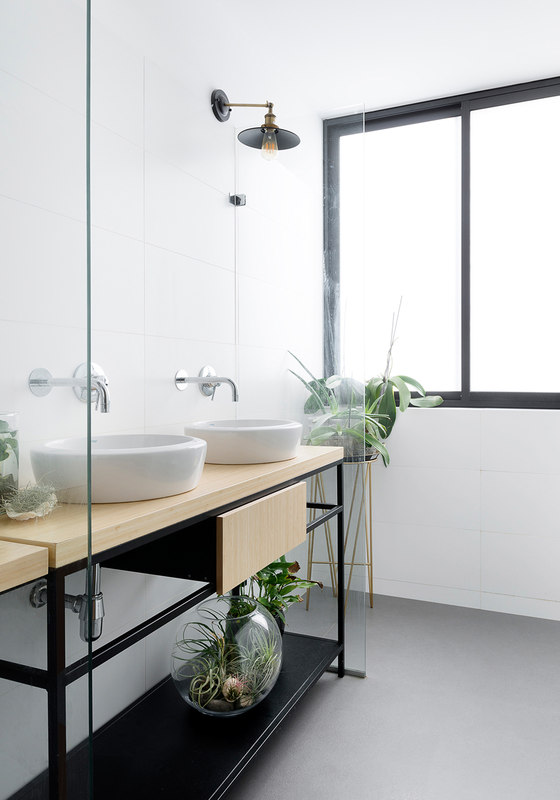
Fotograf: Gidon Levin
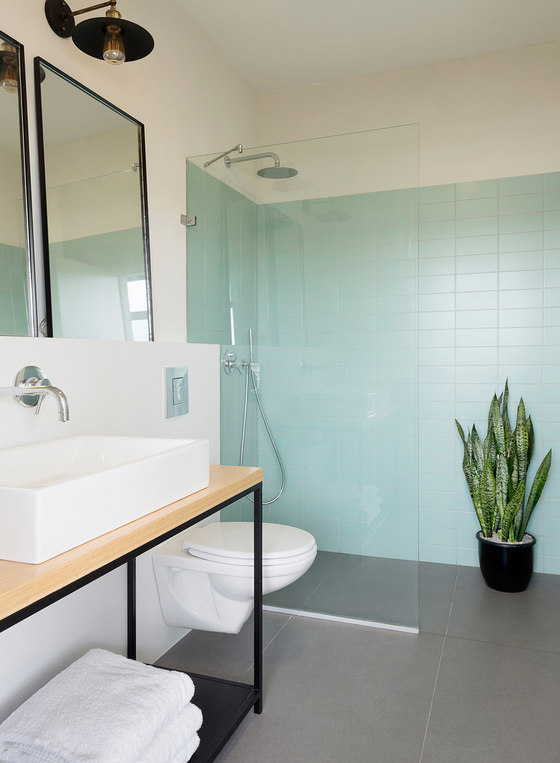
Fotograf: Gidon Levin
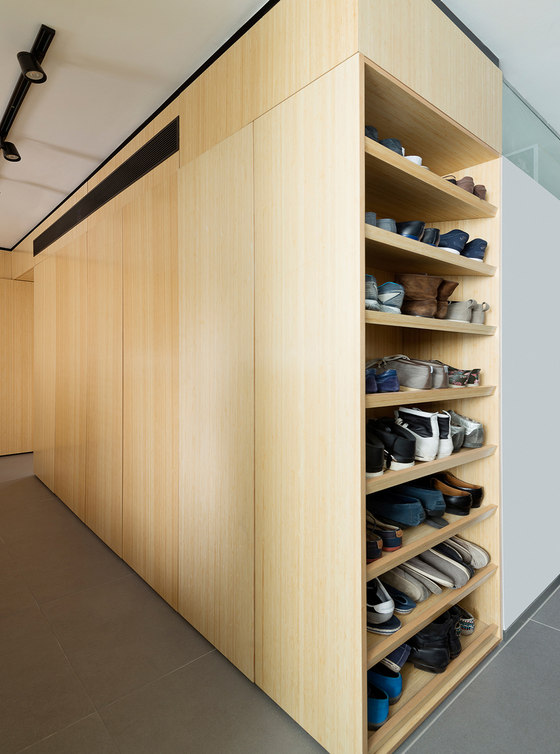
Fotograf: Gidon Levin
















